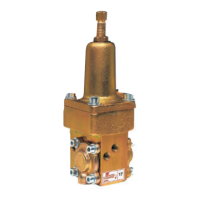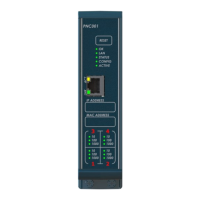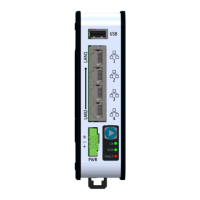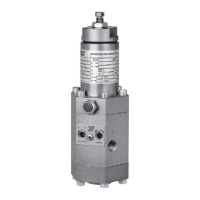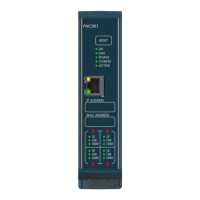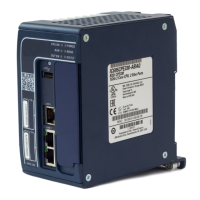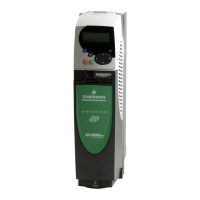Safety
information
Product
information
Mechanical
installation
Electrical
installation
Getting
started
Basic
parameters
Running
the motor
Optimization
NV Media Card
Operation
Onboard
PLC
Advanced
parameters
Technical
data
Diagnostics
UL listing
information
Powerdrive F300 User Guide 139
Issue Number: 2
7.3 Quick start commissioning / start-up
7.3.1 Open loop
Action Detail
Before power-up
Ensure:
• The drive enable signal is not given (terminal 29)
• Run signal is not given
• Motor is connected
Power-up the
drive
Verify that Open Loop mode is displayed as the drive powers up. If the mode is incorrect see
section 5.6 Changing the operating mode on page 108.
Ensure:
• Drive displays ‘Inhibit’
If the drive trips, see Chapter 13 Diagnostics on page 260.
Enter motor
nameplate details
Enter:
• Motor rated frequency in Pr 00.047 (Hz)
• Motor rated current in Pr 00.046 (A)
• Motor rated speed in Pr 00.045 (rpm)
• Motor rated voltage in Pr 00.044 (V) - check if or connection
Set maximum
frequency
Enter:
• Maximum frequency in Pr 00.002 (Hz)
Set acceleration /
deceleration rates
Enter:
• Acceleration rate in Pr 00.003 (s to Pr 01.006)
• Deceleration rate in Pr 00.004
Motor thermistor
set-up
The motor thermistor can be selected in Pr 07.111. Refer to Pr 07.011 for further information.
Autotune
The drive is able to perform either a stationary or a rotating autotune. The motor must be at a
standstill before an autotune is enabled. A rotating autotune should be used whenever possible
so the measured value of power factor of the motor is used by the drive.
• A stationary autotune can be used when the motor is loaded and it is not possible to
uncouple the load from the motor shaft. A stationary autotune measures stator resistance
and transient inductance of the motor and values relating to deadtime compensation from
the drive. These are required for good performance in vector control modes. A stationary
autotune does not measure the power factor of the motor so the value on the motor
nameplate must be entered into Pr 00.043.
• A rotating autotune should only be used if the motor is uncoupled. A rotating autotune first
performs a stationary autotune before rotating the motor at
2
/
3
base speed in the direction
selected. The rotating autotune measures the power factor of the motor.
To perform an autotune:
•Set Pr 00.040 = 1 for a stationary autotune or set Pr 00.040 = 2 for a rotating autotune
• Close the Drive Enable signal (terminal 29). The drive will display ’Ready’.
• Close the run signal (terminal 24). The upper row of the display will flash ’Auto Tune’ while
the drive is performing the autotune.
• Wait for the drive to display ‘Inhibit’ and for the motor to come to a standstill.
If the drive trips, see Chapter 13 Diagnostics on page 260.
• Remove the drive enable and run signal from the drive.
Save parameters
Select 'Save Parameters' in Pr mm.000 (alternatively enter a value of 1000 in Pr mm.000) and
press the red reset button or toggle the reset digital input.
Run Drive is now ready to run
Mot X XXXXXXXXX
No XXXXXXXXXX kg
IP55 I.cl F C 40 s S1
°
VHzmin
-1
kW cos
φ
A
230
400
50 1445 2.20 0.80 8.50
4.90
CN = 14.5Nm
240
415
50 1445 2.20 0.76 8.50
4.90
CN = 14.4Nm
CTP- VEN 1PHASE 1=0,46A P=110W R.F 32MN
I.E.C 34 1(87)
A rotating autotune will cause the motor to accelerate up to
2
/
3
base speed in the
direction selected regardless of the reference provided. Once complete the motor
will coast to a stop. The enable signal must be removed before the drive can be
made to run at the required reference.
The drive can be stopped at any time by removing the run signal or removing the
drive enable.
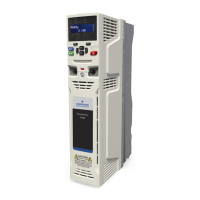
